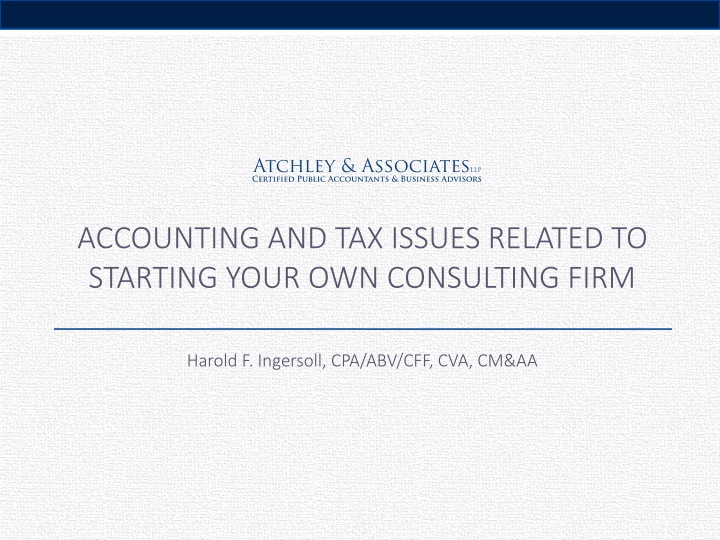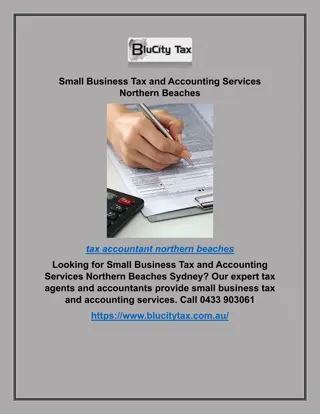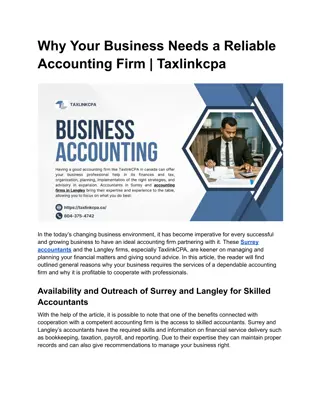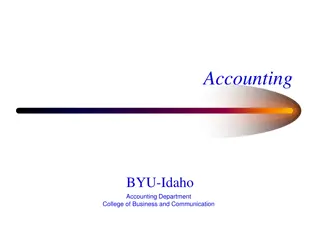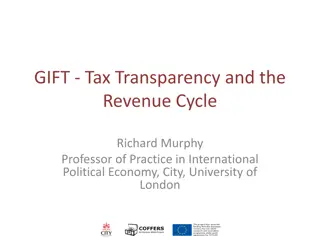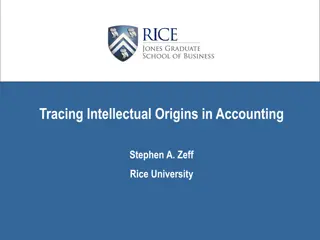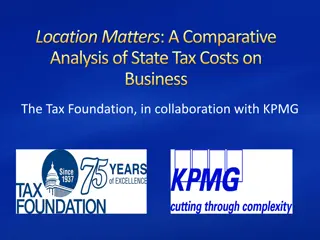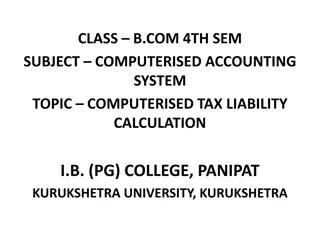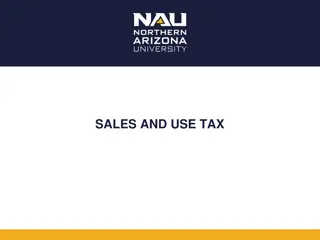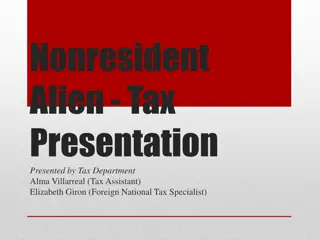Accounting and Tax Issues for Starting Your Consulting Firm
Choosing the right legal entity is crucial for optimal tax treatment when starting a consulting firm. Learn about the pros and cons of different tax structures like C Corporation, S Corporation, Partnership, Limited Partnership, and Limited Liability Company. Understand how each entity affects taxation, employee benefits, ownership, and more.
Download Presentation

Please find below an Image/Link to download the presentation.
The content on the website is provided AS IS for your information and personal use only. It may not be sold, licensed, or shared on other websites without obtaining consent from the author.If you encounter any issues during the download, it is possible that the publisher has removed the file from their server.
You are allowed to download the files provided on this website for personal or commercial use, subject to the condition that they are used lawfully. All files are the property of their respective owners.
The content on the website is provided AS IS for your information and personal use only. It may not be sold, licensed, or shared on other websites without obtaining consent from the author.
E N D
Presentation Transcript
ACCOUNTING AND TAX ISSUES RELATED TO STARTING YOUR OWN CONSULTING FIRM Harold F. Ingersoll, CPA/ABV/CFF, CVA, CM&AA
1. CHOOSING THE CORRECT LEGAL ENTITY FOR EFFICIENT TAX TREATMENT A. Tax entities There are pros and cons for each of the different tax structures. C Corporation 1120 S Corporation 1120S Partnership (LP, GP) 1065 LLC Not a taxable entity. Elections can be made to be taxed as any of the above. May also be reported on the 1040 as a proprietorship. i. ii. iii. iv.
1. CHOOSING THE CORRECT LEGAL ENTITY FOR EFFICIENT TAX TREATMENT (cont ) C. C Corporation Pros 1045 Rollover of Gain (Holding period 6 months). 1202 Exclusion of Gains (Holding period 5 years). Treatment of employee benefits for owners is simplified. Availability for multiple classes of stock. Cons Double taxation. i. 1. 2. 3. 4. ii. 1.
1. CHOOSING THE CORRECT LEGAL ENTITY FOR EFFICIENT TAX TREATMENT(cont ) D. S Corporation Pros 1. Single level of taxation. 2. Income flows through to the owners and is taxed on their respective returns. 3. Owners can be employees. 4. No self-employment tax on profits. Cons 1. Some employee benefits of the owners may be non- deductible. 2. Can only have voting and non-voting stock. 3. No special allocations allowed. 4. Limitations on number of owners and who can be an owner. i. ii.
1. CHOOSING THE CORRECT LEGAL ENTITY FOR EFFICIENT TAX TREATMENT(cont ) E. Partnership Limited Partnership i. Pros 1. Income flows through to the owners and is taxed on their respective returns. 2. Flow through income to limited partners is exempt from self employment tax. 3. Disproportionate distributions and allocations are allowed. 4. Can have different levels of ownership and allocations, such as income partners. ii. Cons 1. Owners cannot be employees. 2. Requires a separate general partner. 3. More complicated.
1. CHOOSING THE CORRECT LEGAL ENTITY FOR EFFICIENT TAX TREATMENT(cont ) F. Partnership Limited Liability Company i. Pros 1. Income flows through to the owners and is taxed on their respective returns. 2. Does not require a general partner. 3. Simpler than a limited partnership. 4. Disproportionate distributions and allocations are allowed. 5. Different levels of ownership and allocations are allowed. ii. Cons 1. All flow through income may be subject to self employment tax. 2. Owners cannot be employees. 3. Some employee benefits for the owners may not be deductible.
2. TAX OBLIGATIONS A. Federal income taxes B. State income taxes C. State sales taxes D. Payroll taxes Income tax withholding FICA withholding State unemployment Federal unemployment Additional state payroll tax withholding requirements (depending on the employees are located) i. ii. iii. iv. v.
3. PAYING TAXES TIMELY DO YOU KNOW ALL OF THE DEADLINES FOR PAYING ALL OF THE TAXES DISCUSSED EARLIER? A. Quarterly estimates B. Payroll tax deposits C. Payroll taxes in general
4. OTHER ISSUES A. Be careful of transactions that trigger phantom income. B. Accounting system C. Being sure to keep up with the accounting. D. Knowing what documentation to keep. E. Don t try to do everything yourself.
5. AVOID BLENDING PERSONAL AND BUSINESS FINANCIAL RECORDS have business personal finances. A. Must finances separated from B. Separate checking accounts. C. Separate credit cards. D. Paying checking account or with business credit card. personal bills/expenses from business
6. DEDUCTING BUSINESS EXPENSES Knowing what is deductible and how it is deductible. A. Meals (100% or 50%). asset depreciation). B. Fixed purchases (Section 179, Bonus C. Start up costs (Write off or capitalize).
DISCLAIMER Many of the issues discussed in this presentation have significant legal impact in addition to income tax impact. We are not attorneys and any discussion of liability or legal structure issues need to be discussed with an attorney prior to decision making.
CONTACT INFORMATION Atchley & Associates, LLP 1005 La Posada Drive Austin, TX 78752 512-346-2086 www.atchleycpas.com Harold F. Ingersoll, CPA/ABV/CFF, CVA, CM&AA hingersoll@atchleycpas.com
